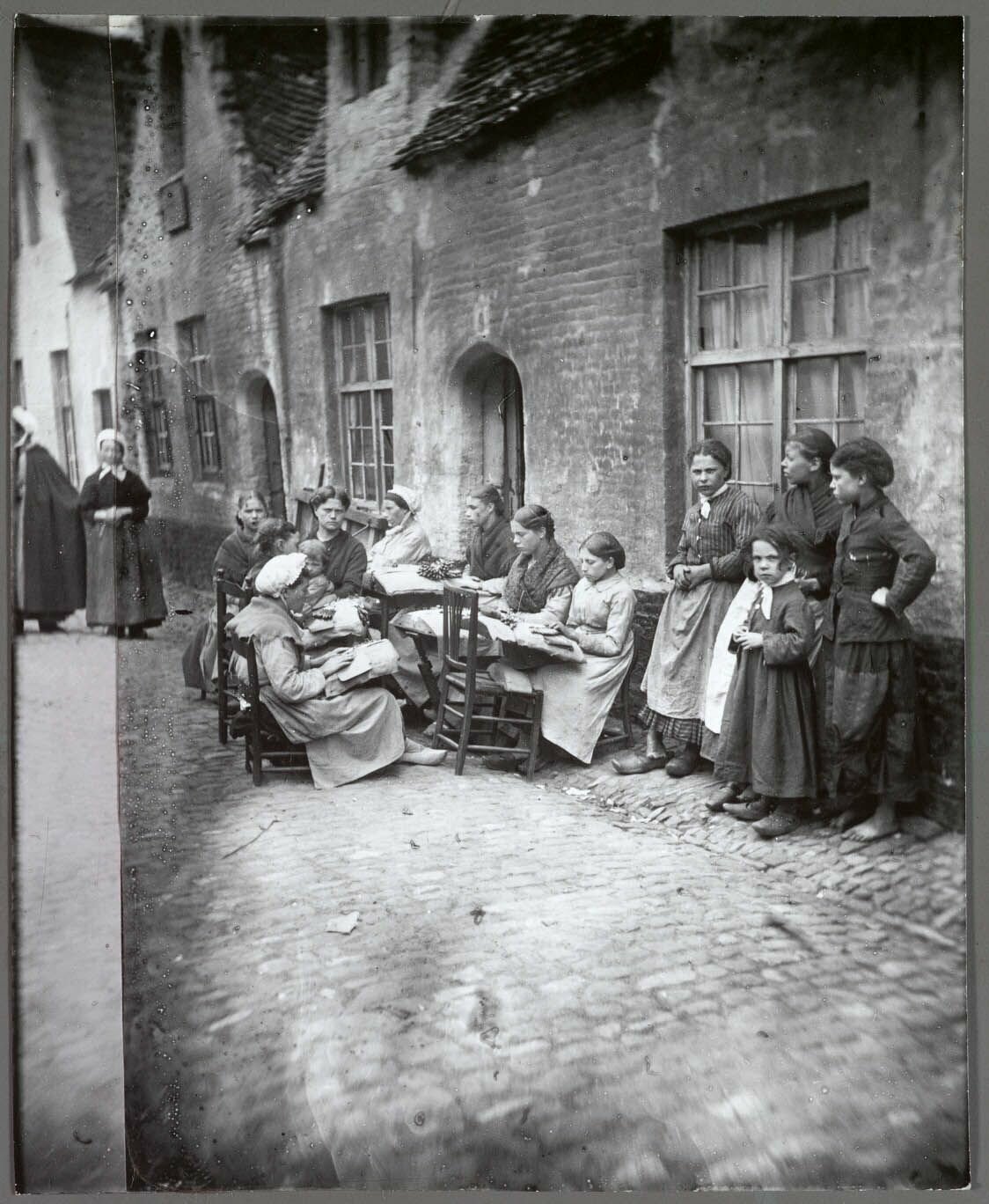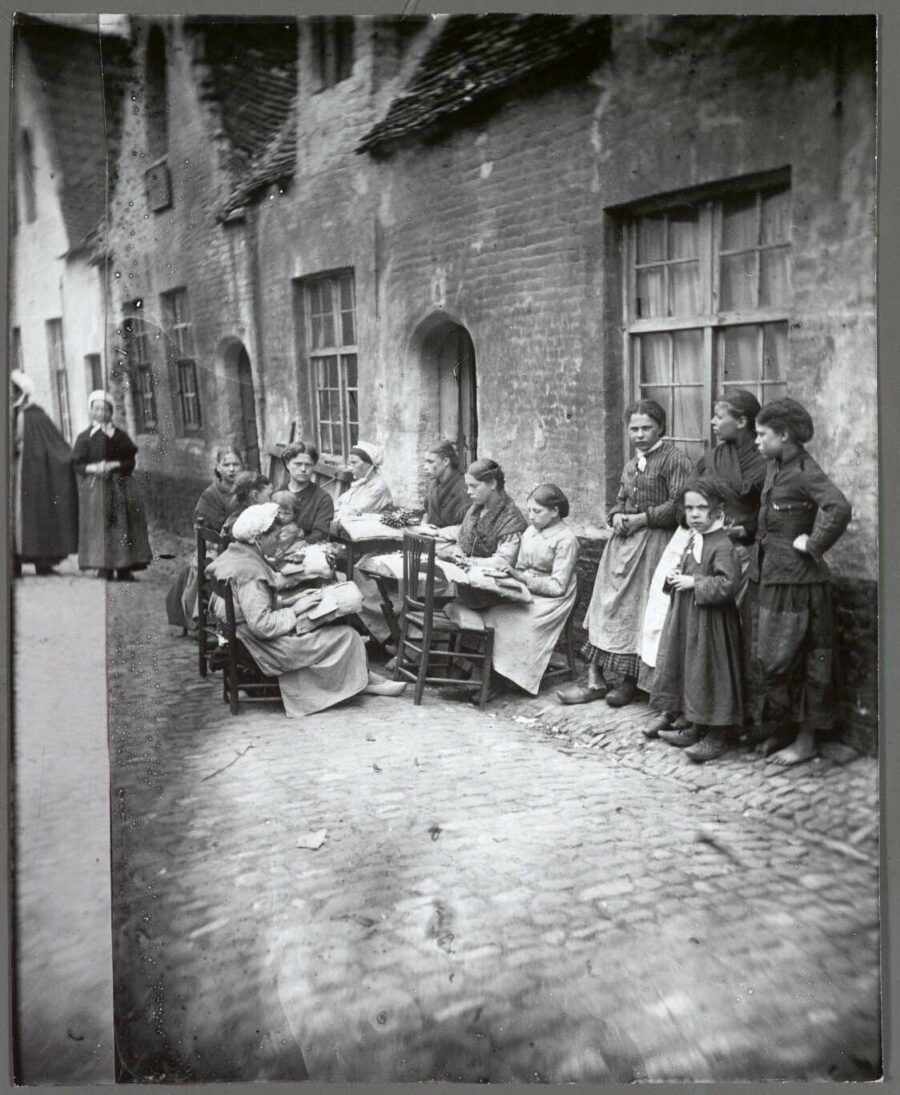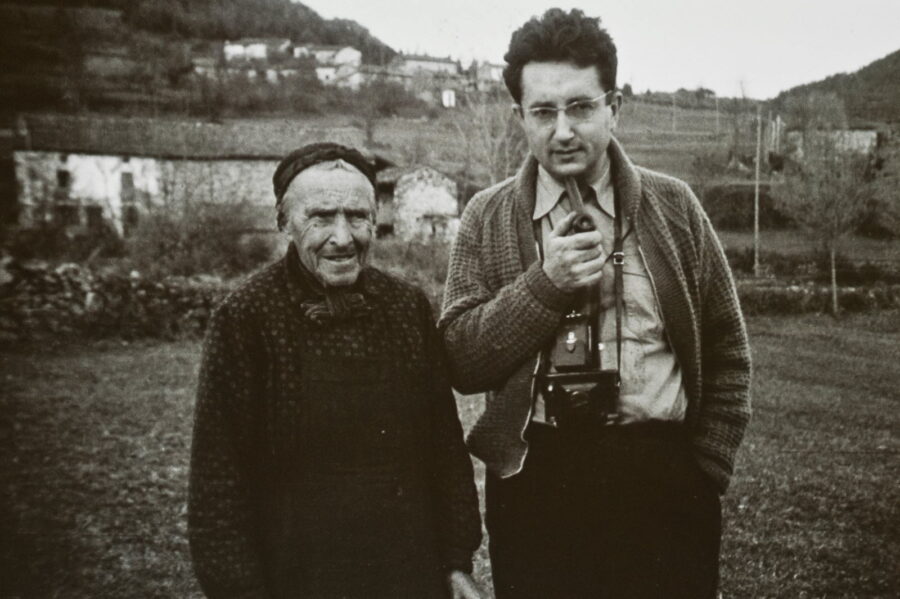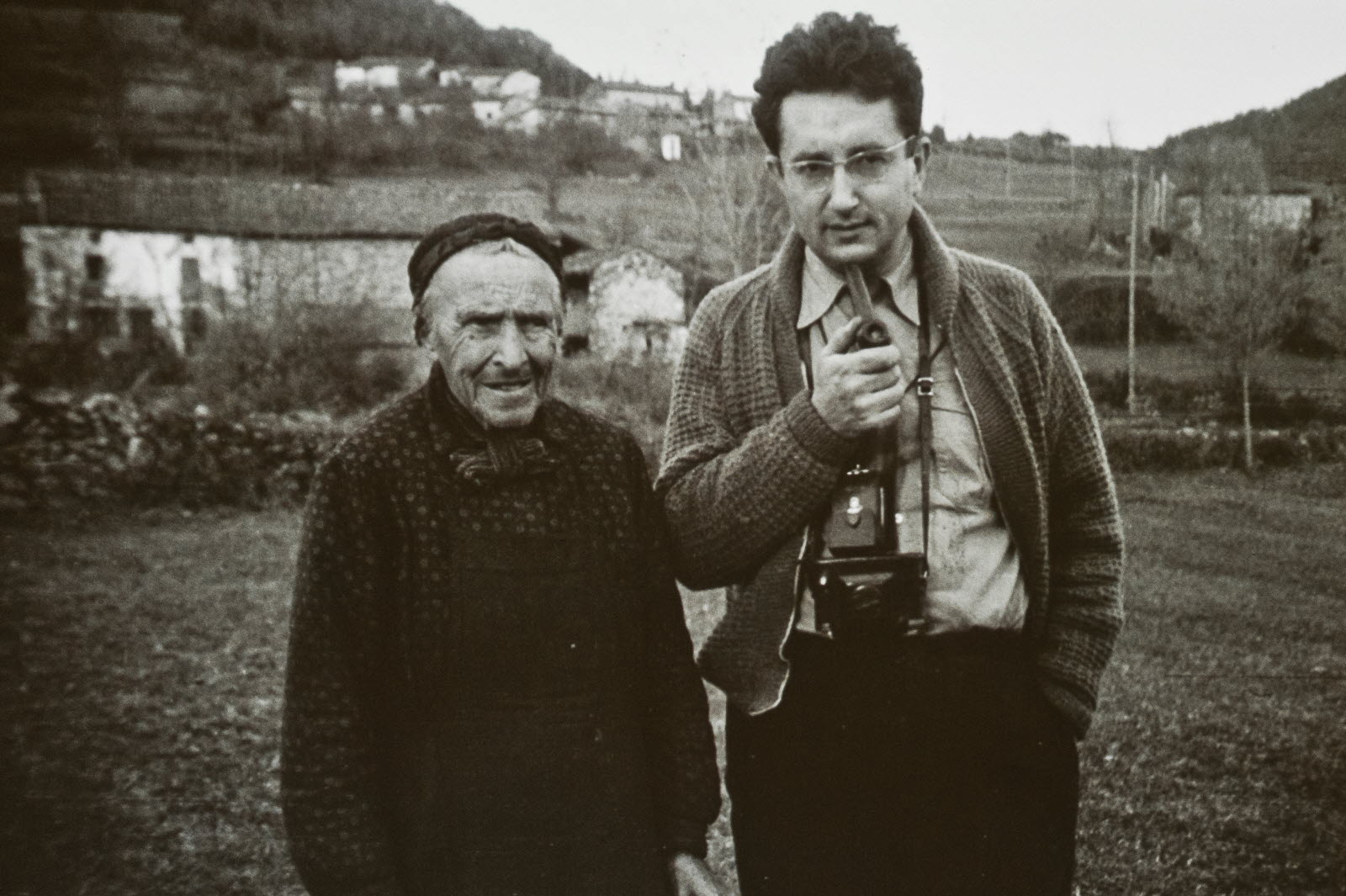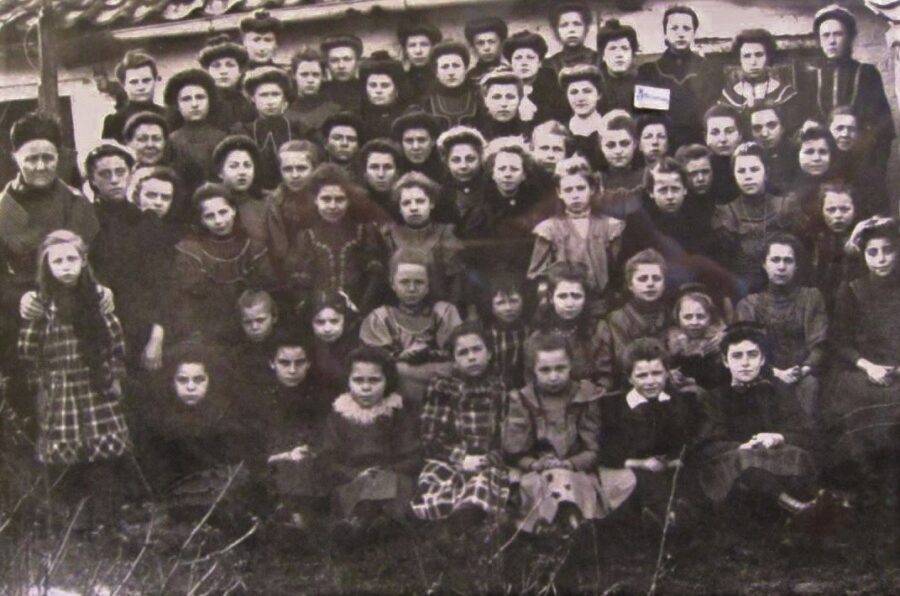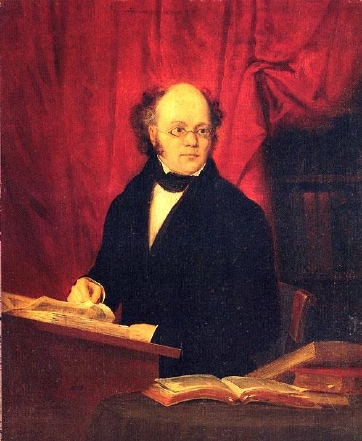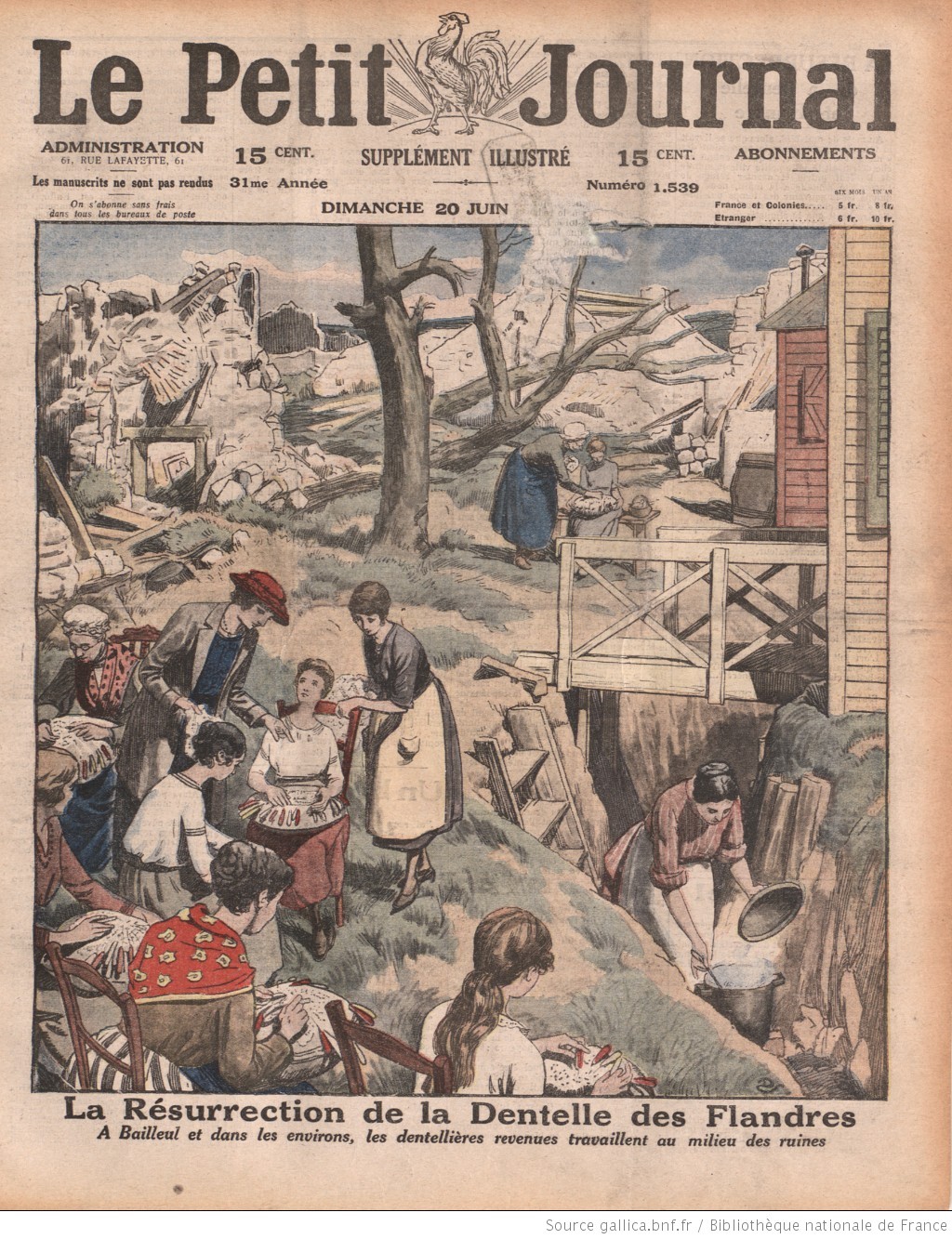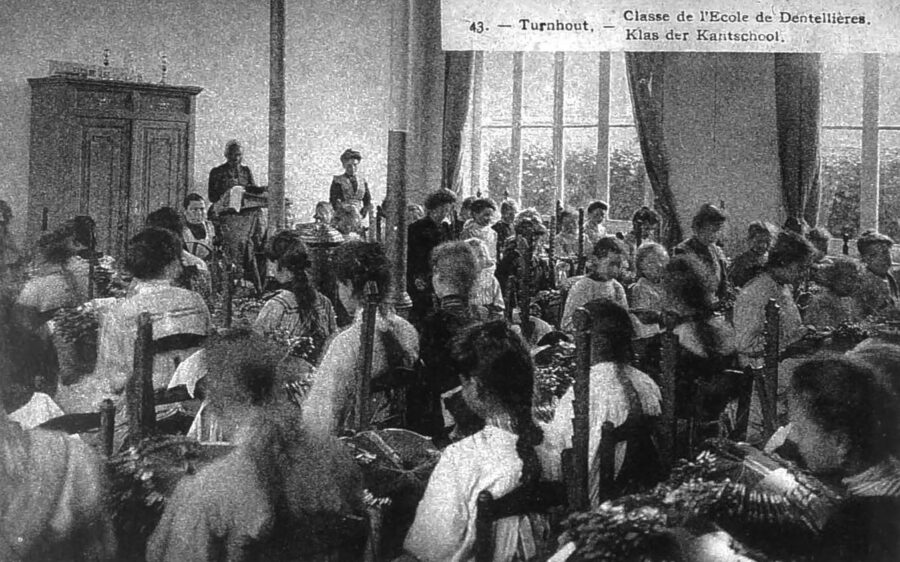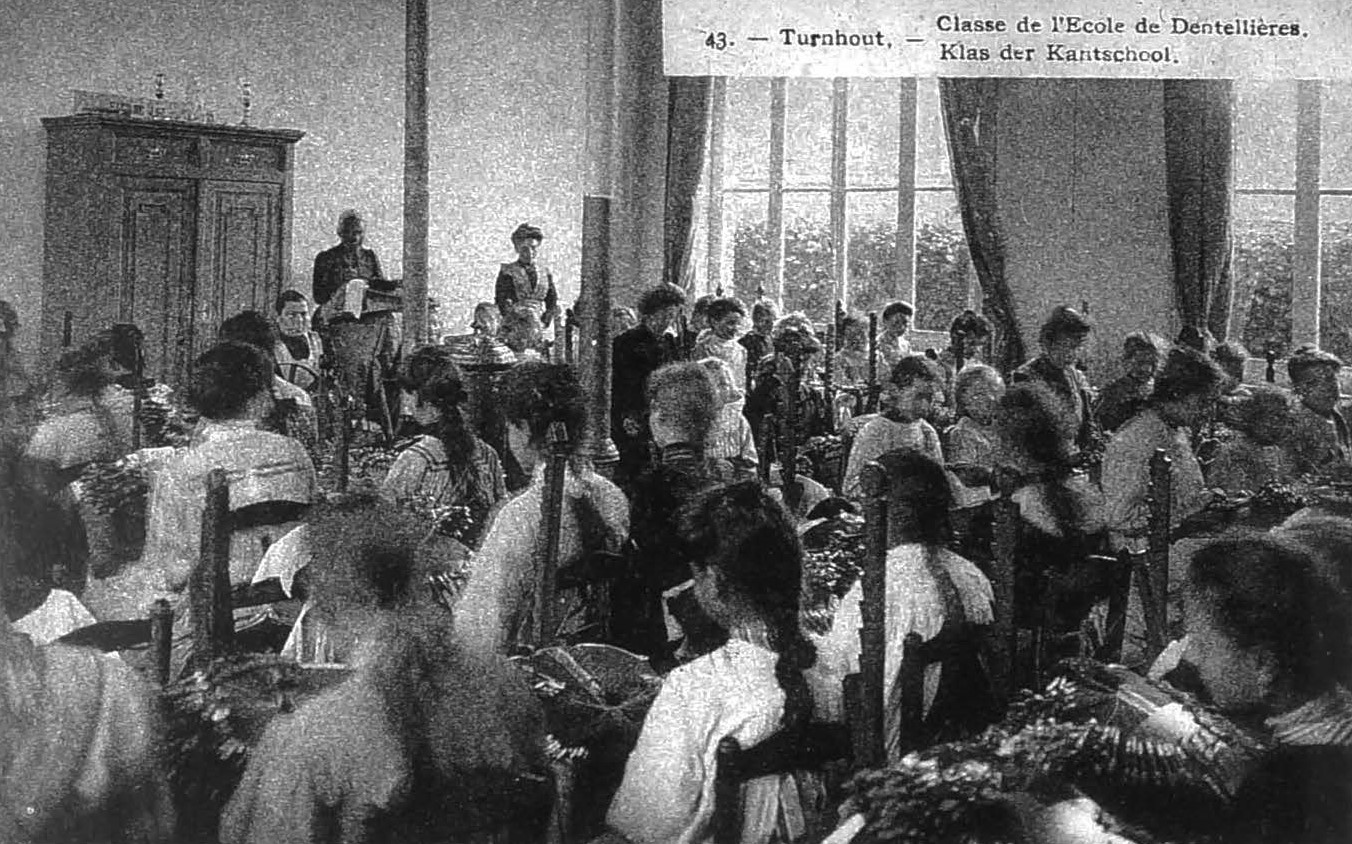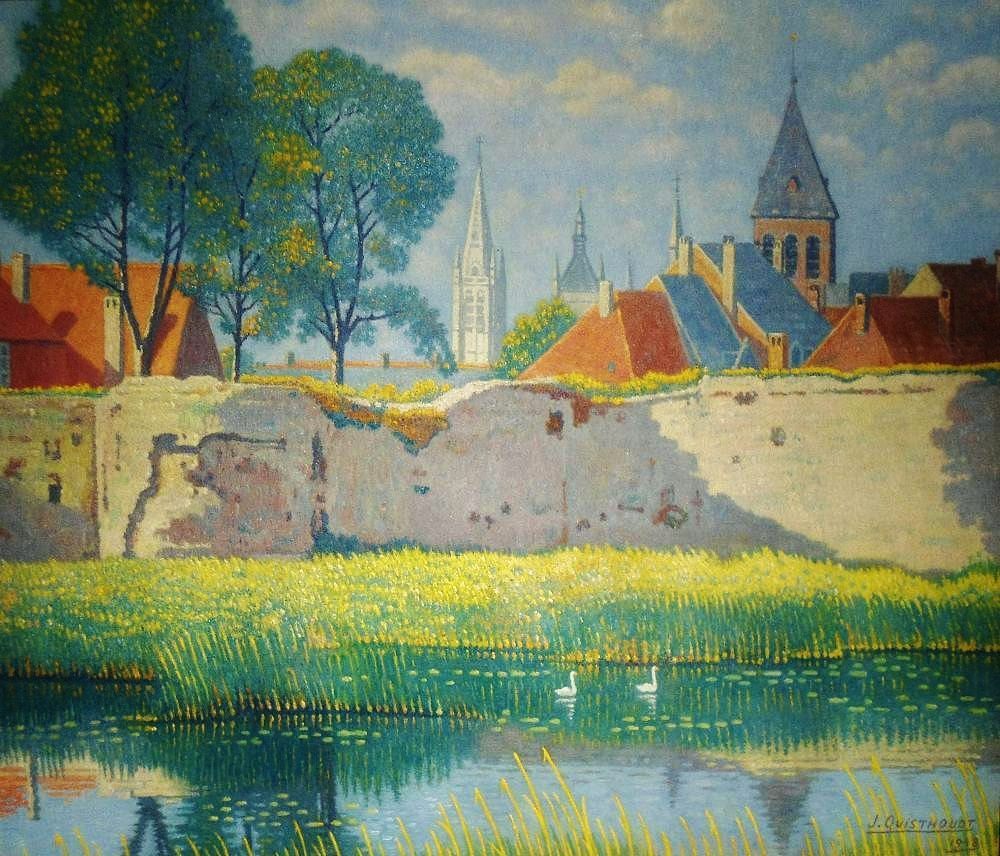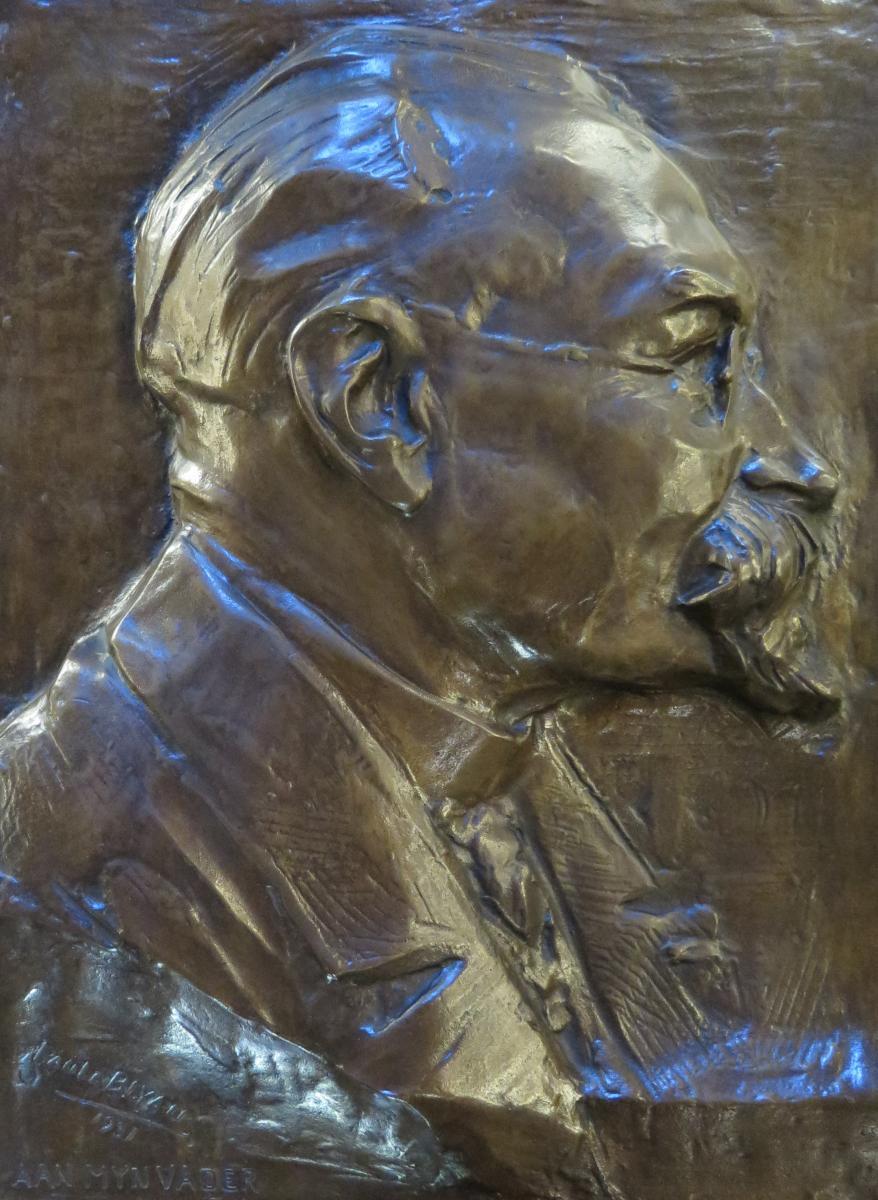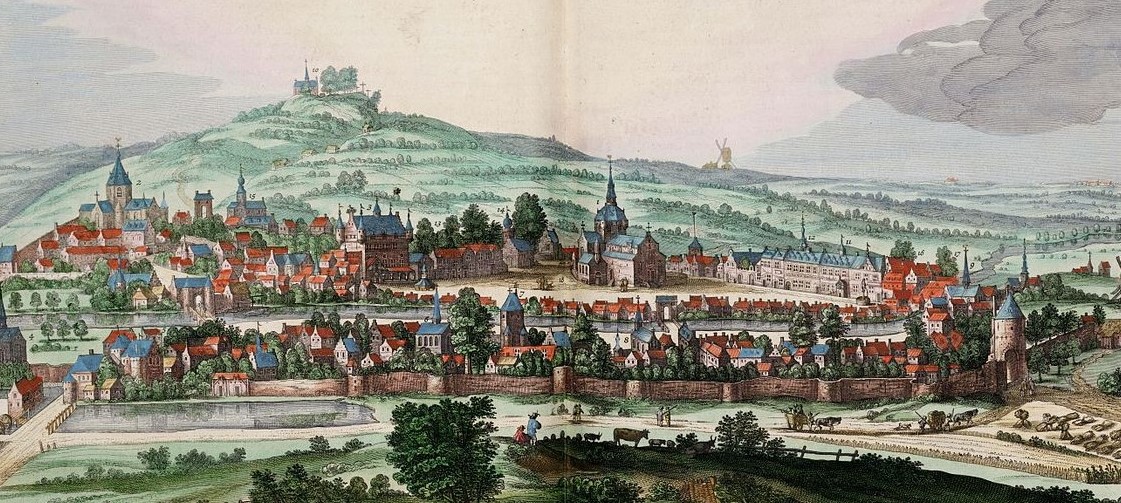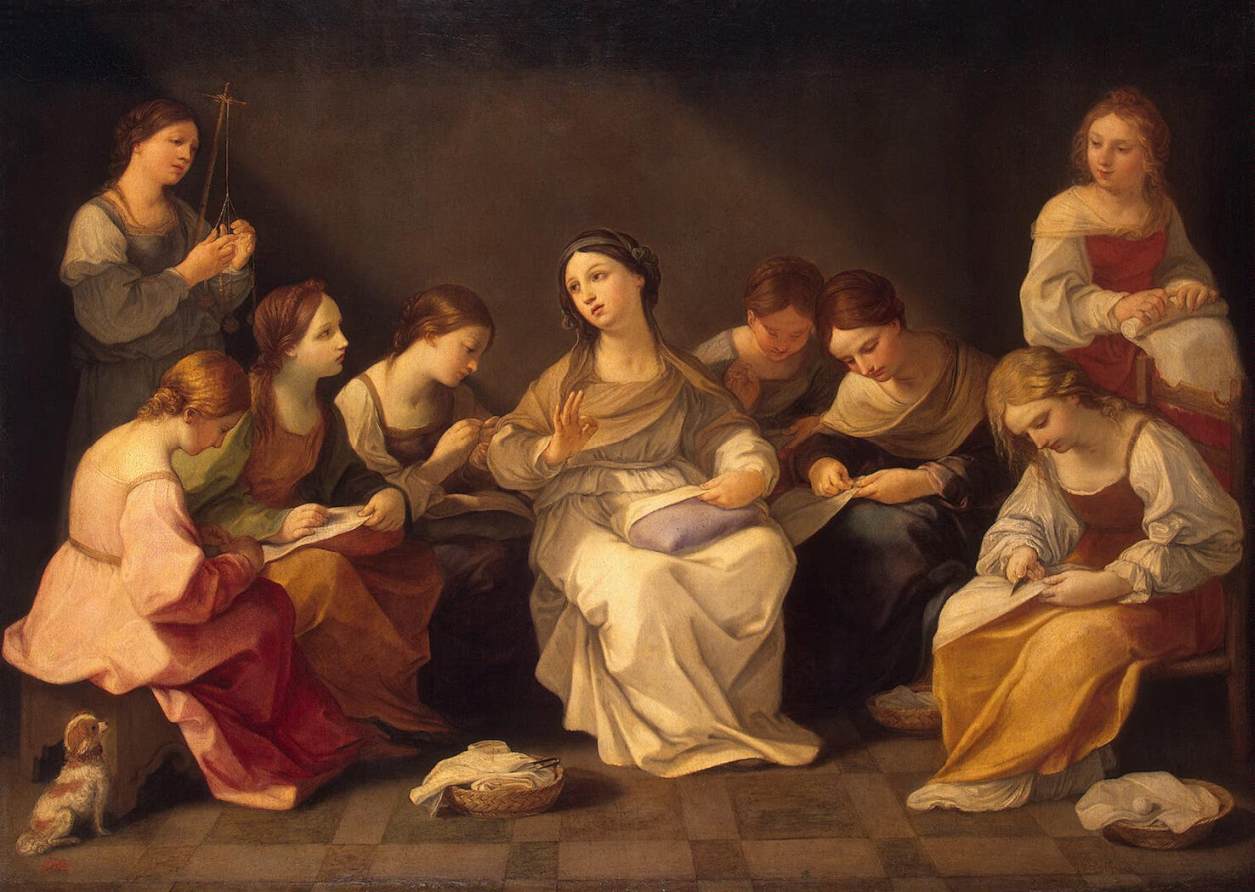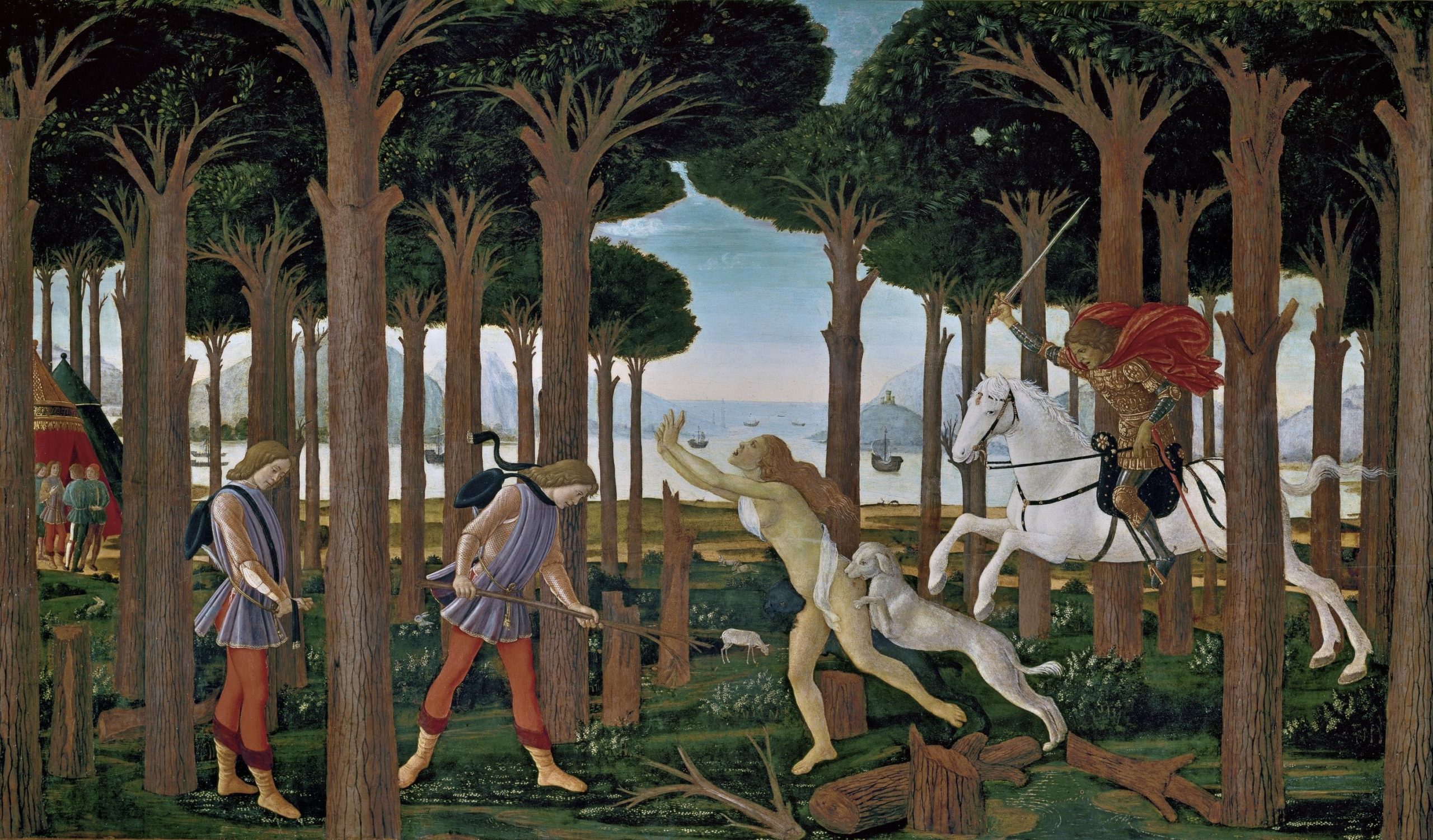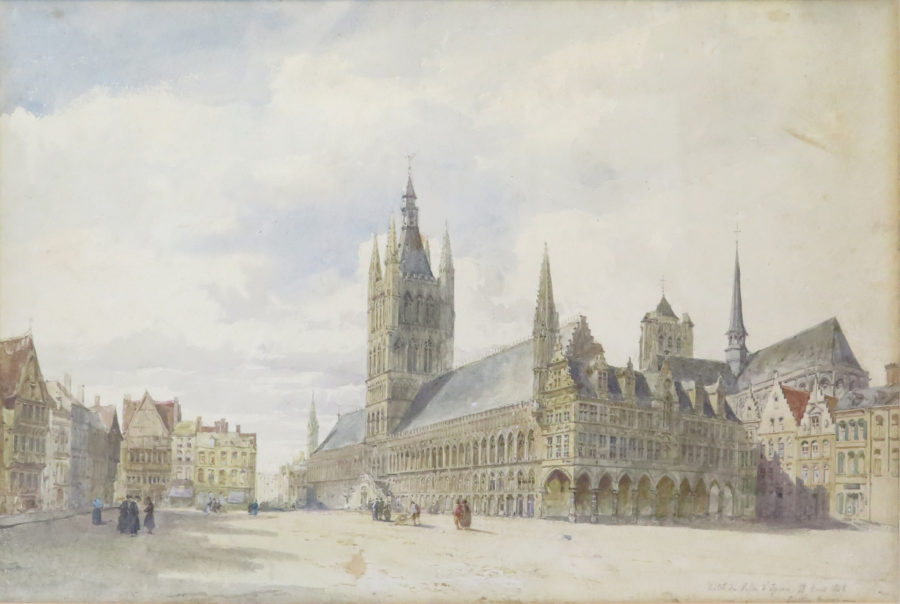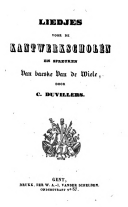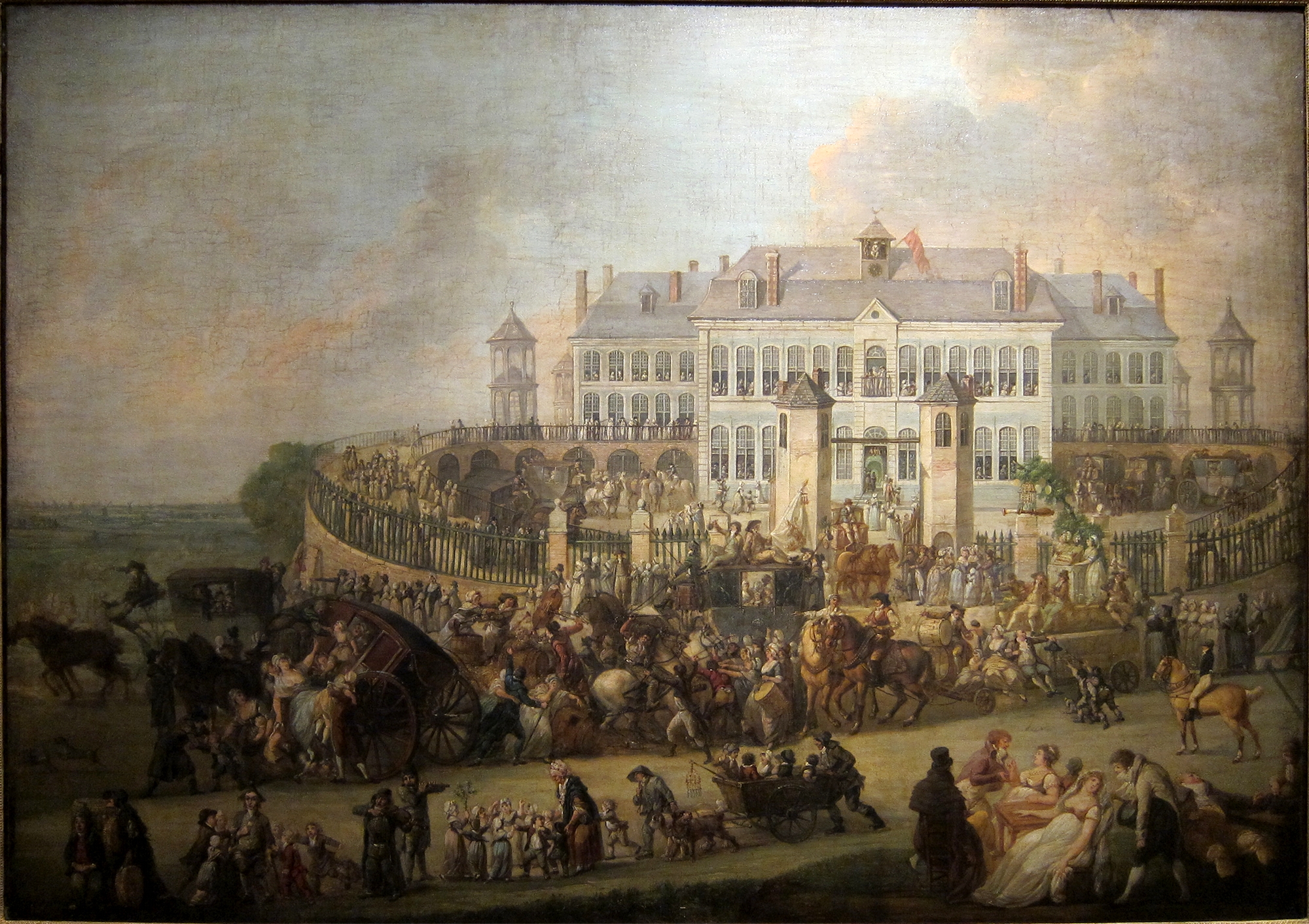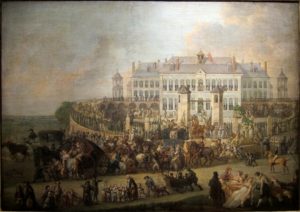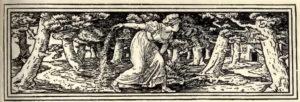25 November is the Feast of Saint Catherine, and historically a holiday for the Midlands lacemakers, particularly those in Buckinghamshire and some northern parts of Northamptonshire and Bedfordshire. (Lacemakers in the southern and central parts of the latter counties tended to celebrate Saint Andrew’s Day instead; we deal with this holiday on his feast, 30 November.)
According to the ‘official’ legend — and we’ll see that lacemakers, and in fact almost everybody else who celebrated her feast, told a rather different story — Saint Catherine was a virgin martyr from early fourth century Alexandria in Egypt. Her father was the Roman governor of the province, but Catherine was a philosopher and Christian convert. She refused to submit first to the persecutions of Emperor Maxentius, then to his lascivious attentions, declaring that she was the bride of Christ. Infuriated, Maxentius ordered that she be broken on a wheel, but the device fell apart at her touch. Finally he had her beheaded.

Lucas Cranach the Elder, c. 1504-9, ‘The Martyrdom of St. Catherine’. The painting is in the collection of the Ráday Library of the Reformed Church, Budapest (source Wikipedia Commons)
Although there is little historical evidence for Catherine, she was one of the most popular saints in both the Catholic and Orthodox churches, and her cult clearly survived the Protestant Reformation in England. Because her attribute is the wheel, she became the patron of wheelwrights, and by extension carpenters, as well as ropemakers and spinners. She was the patron of both young women and old maids (spinsters in another sense), and as these groups formed the labour force for the needle trades, her patronage extended to all involved in textile production. The ‘bal de Sainte Catherine’ is still an important event in the calendar of the Paris fashion houses.[1]
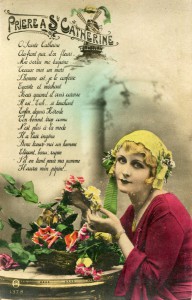
A ‘Catherinette’ celebrating Saint Catherine’s Day in early C20 France. We might explain the significance of the hat and the colours yellow and green in a future blog. For further examples of how the French celebrate Saint Catherine’s Day, see Guy Larcy’s pinterest board ‘Fête Sainte Catherine’.
In England, ‘keeping Cattern’ —that is celebrating Saint Catherine’s Day — was by no means confined to lacemakers. Even after the Reformation, women in the workhouse would receive a dole in order to ‘keep Cattern’.[2] In some towns, such as Ware and Peterborough, women — in the latter town principally the female inmates of the workhouse — paraded behind their own ‘queen’, singing:
Here comes Queen Catherine, as fine as any queen,
With a coach and six horses, a-coming to be seen,
And a-spinning we will go, will go,
And a-spinning we will go.
No doubt this was an opportunity to raise money for a feast later in the day.[3] In other parts of the country, particularly Worcestershire (though the custom has been recorded elsewhere), it was young children who used this day as an opportunity to tramp from house to house collecting apples and ale, aided by a rhyme such as this one:
Catherine and Clement be here, be here,
Some of your apples and some of your beer;
Some for Peter, and some for Paul,
And some for Him that made us all.
Clement was good old man,
For his sake give us some,
None of the worst but some of the best,
And God will send your soul to rest![4]
Saint Clement’s feast falls on 23 November and was another important holiday, though usually observed in different regions to Saint Catherine’s. A Sussex version of this rhyme names ‘Cattern’ as the mother of ‘Clemen’, an unlikely relationship for a virgin saint![5] Other indications of her widespread popularity are a recipe for a Cattern pie from Somerset,[6] and Cattern Fair held outside Guildford, where Cattern cakes were sold well into the nineteenth century.[7]
However, by the late nineteenth century, lacemakers were almost the only group to still hold her in honour. Occasionally in Bedfordshire and Buckinghamshire the mummers who put on the traditional drama of Saint George and the Turkish Knight in the run-up to Christmas were called ‘Katterners’, though any specific memory of Saint Catherine seems to have been forgotten.[8] Newspaper accounts suggest that ‘Cattern’ was still kept by carpenters in Chatteris (Cambridgeshire) in the 1860s,[9] and the farmer Mr Lot Arnsby of Raunds (Northamptonshire), though a Baptist, still treated his labourers to cakes and ale on Saint Catherine’s Day in the 1870s.[10] In both cases, the feast was held on 6 December, ‘Old Saint Catherine’s’, that is date of her feast before the adoption of the Gregorian calendar in Britain in 1752 had entailed the loss of eleven days. These examples are very isolated compared with the numerous newspaper mentions of lacemakers ‘keeping Cattern’, sometimes on Old and sometimes on New Saint Catherine’s Day. In fact the feast seems to have undergone periodic revivals among lacemakers, often sponsored by local landowners and patrons of the lace industry.
Although there are references to women ‘Catherning’ or ‘keeping Catterns’ from the seventeenth and eighteenth century,[11] the earliest reference we have so far found to this day as a special feast among lacemakers is in a short article in Notes and Queries for May 1862 by ‘A.A.’ (we have not identified the initials) reporting that:
In Buckinghamshire, on Cattern Day (St. Catherine’s, 25th of November,) these hard-working people hold merry-makings, and eat a sort of cakes they call ‘wigs,’ and drink ale. The tradition says it is in remembrance of a Queen Catharine; who, when the trade was dull, burnt all her lace, and ordered new to be made.[12]
Although A.A. asked readers who this Queen might have been, the topic went quiet in that journal until in 1868. Interest was revived then by a review in The Quarterly Review of Mrs Bury Palliser’s 1865 A History of Lace, in which the author claimed (and in this the reviewer was following Mrs Palliser’s lead) that:
Catherine of Aragon, according to tradition, introduced the art of making lace into Bedfordshire during her sojourn at Ampthill in 1531-33. She was a great adept in the arts of the needle. Until quite lately the lace-makers kept ‘Cattern’s-day’ as the holiday of their craft, in memory of the good Queen Catherine.[13]
On what authority did Mrs Bury Palliser make this statement, asked J.M. Cowper in Notes and Queries?[14] The several responses did not resolve that issue, but they did provide plenty of evidence for lacemakers ‘keeping Catterns’. For example, John Plummer, who originally came from Kettering, reported that the feast
is known to be kept, for several generations, throughout the whole of Northamptonshire lace-making districts, as well as in those of Bedfordshire. By some it is called ‘candle-day,’ from its forming the commencement of the season for working at lacemaking by candle-light.[15]
He reiterated the tradition that ‘Queen Katherine was a great friend to the lacemakers’, but suggested that instead of Catherine of Aragon, Catherine Parr was meant, because the Parrs were a Northamptonshire family. However later in the same month A.A. returned to the topic and reiterated his story, this time definitely identifying the lace-burning queen as Catherine of Aragon.[16]
Readers will have noticed that, so far, there is no reference to a saint in any of these lacemakers’ celebrations, only queens. Two different stories were told. The oldest, though how old we are uncertain, concerns a queen burning her lace in order to create more work for lacemakers. A ballad, claimed as traditional (though we have our doubts) was apparently sung at a Kattern Day revival in Marsh Gibbon in 1905:
Queen Katherine loved to deck with lace
The royal robes she wore;
But though she loved to wear her lace,
She loved the lace-folk more.
So now for good Queen Katherine’s sake
Put bones and sticks away,
And keep the yearly festival
And sing on ‘Kattern Day.’[17]
As one recent historian has written, this story encapsulates a feminine, utopian economy which completely denies the laws of supply and demand, and in which the great existed to provide work for the small, and ‘harmoniously brings together the otherwise separate processes of production and consumption.”’18]
The second story, crediting Queen Catherine of Aragon as the original teacher of lace in England, is slightly later in origin but far more widespread, as it was regularly repeated in newspaper accounts in the late nineteenth century, became the focus of W.I. lectures and pageants in the twentieth, and is now regularly repeated on the web. This continuing tradition owes everything to Mrs Palliser’s reputation as a reliable historian of lace, it has no basis in any oral tradition linking that queen with the genesis of the lace industry. Mrs Palliser inferred from rather vague lacemakers’ traditions concerning a ‘good queen who protected their craft’, that the art of lace-working, as it then existed, was first imparted to the peasantry of Bedfordshire, as a means of subsistence, through the charity of Katherine of Aragon.’[19] To return to J.M. Cowper’s question in Notes and Queries — on what authority had this claim been advanced — the answer is on no greater authority than Mrs Palliser’s romantic inference. However, her invention has proved enormously popular, for it invoked a tradition of royal patronage of lace that was, at the time, still vital to the trade.

Catherine of Aragon by Lucas Hornebolte, now in the collection of the Duke of Buccleuch (the dukes of Buccleuch were Northamptonshire landowners as well as Scottish aristocracy; according to Rev Lindsay of Kettering, in the 1860s the then Duke of Buccleuch was responsible for promoting Katterns in that town). From Wikipedia Commons.
We doubt that Catterns had a connection to any English queen; rather it was the continuation of a Catholic saint’s day feast in Protestant England. We cannot say when and where the tradition turned the saint into queen: it may have been a post-Reformation defensive measure, for it was permitted to celebrate royalty when Catholic saints had fallen into disrepute. However, it is worth pointing out that in the popular culture of Catholic Europe, Catherine was always imagined as a queen, or at least a princess. The first line of a song popular throughout Spain, France and Italy, and indeed much further afield, tells us that Catalina/Catherine/Caterina was a ‘hija de un rey’ (in Spanish), ‘fille d’un roi’ (in French), ‘figlia di un re’ (in Italian).[20] Sometimes she is specifically identified as the daughter of the king of Hungary; in all cases it is her father, not a Roman emperor, who is responsible for her martyrdom. And while Saint Catherine was not usually the named patron of European lacemakers, nonetheless European lacemakers knew and sang her story. For example, in an audio recording made by Jean Dumas in 1959, you can hear Virginie Granouillet, a seventy-year-old lacemaker from Roche-en-Régnier (Haute-Loire), accompanying her bobbins with a version of the song.[21]

Virginie Granouillet, lacemaker and singer of Roche-en-Régnier (Haute-Loire). The photo, c. 1960, was taken by the song collector Jean Dumas. Dumas’ recordings of 178 of Virginie’s songs, including ‘Sainte Catherine’, are now available online.
How did lacemakers ‘keep Catterns’? There are vague references to an earlier period when women dressed up in male attire and indulged in unfettered merry-making, including amorous (or violent) advances to passing men, a moment of female license, but we have no specific information.[22] The fullest description comes from Mrs Frederica Orlebar of Hinwick House, Podington (Bedfordshire) who wrote an account of an attempted revival in 1887 — which would form the template for further revivals in 1906 and 1937.[23] The Orlebars were landed gentry who had provided leadership to the county, as magistrates, M.P.s and masters of the hunt for several generations. Their patronage of the lace industry was part and parcel of this paternalistic concern for their tenants and electors. Catherine Channer used the manuscript ‘Orlebar Chronicles’ to write her 1900 account:
Cattern Tea.
In Podington and neighbouring villages the lacemakers have, within the memory of middle-aged people, ‘kept Cattern’, on December 6th – St. Catherine’s Day (Old Style).
I believe it was Catherine of Aragon who used to drink the waters of a mineral spring in Wellingborough, and who (as is supposed) introduced lace-making into Beds. The poor people know nothing of the Queen, only state that it was an old custom to keep ‘Cattern.’
The way was for the women to club together for a tea, paying 6d. apiece, which they could well afford when their lace brought them in 5s. or 6s. a week. The tea-drinking ceremony was called ‘washing the candle-block,’ but this was merely an expression. It really consisted in getting through a great deal of gossip, tea, and Cattern cakes – seed cakes of large size. Sugar balls went round as a matter of course. After tea they danced, just one old man whistling or fiddling for them, and ‘they enjoyed themselves like queens!
The entertainment ended with the cutting of a large apple pie, which they divided for supper. Their usual bedtime was about eight o’clock.[24]
This may be more staid than earlier celebrations, but some of the elements referred to here come up in other accounts too. The first is that it was a communal women’s festival: a man might provide the music but the lacemakers danced with each other. Money was pooled to provide food, drink and entertainment: rabbit or steak with onion sauce, followed by pies and cakes. Cattern pies — sometimes containing mincemeat, sometimes apples (as we have seen, Catterners collected apples) — might be arranged in the shape of a wheel, with partakers being offered a ‘spoke’.[25] Mrs Orlebar quoted a rhyme, apparently sung by the nightwatchman of Kettering, which made the pies the centrepiece of the celebration:
Rise, maids arise!
Bake your Cattern pies!
Bake enough, and bake no waste,
So that the old bell-man may have a taste!
Cattern cakes appear to be a different thing to a Cattern pie: the cakes come in various descriptions but the recipes almost always contain caraway seeds, which connects them to the ‘soul cakes’ consumed at Halloween in other parts of the country. The drink mentioned in connection with these festivities was methleglin, a honey mead termed ‘meytheagle’ in the Bedfordshire dialect.[26]
The term ‘washing’ or ‘wetting the candle-block’ explains why Plummer called this a ‘candle-day’. The holiday was not just the celebration of the patroness of lacemakers, it was the ritual marking of an important moment in the lacemakers’ year, for this was the day when candles, objects of enormous expense, could legitimately be used for evening work. These kind of candle feasts, opening and closing the period of neighbourly winter evening work gatherings, were quite common all over Europe. Among English lacemakers the closing day of the season appears to have been Candlemas (2 February), though it was not celebrated as much as Catterns.[27] This practice of working together to share light and heat also explains why Catterns was a communal feast. A candle-block provided light not for one lacemaker but many: a single candle would be mounted in the centre of several glass globes or flasks filled with snow-water, which would concentrate the light on the pillows of several lacemakers (the highest number of users of a single candle that we have so far encountered is eighteen!). But lacemakers did not only symbolically ‘wash’ the candleblock, they also leapt over it. According to John Aubrey, back in the 1680s, Oxfordshire girls (not specifically lacemakers) would ‘set a candle in the middle of the room in a candlestick, and then draw up their coats into the form of breaches [another hint at cross-dressing], and dance over the candle back and forth, with these words’:
The tailor of Biciter [Bicester]
He has but one eye
He cannot cut a pair of green galagaskins
If he were to die.
Aubrey thought the custom was obsolete even in his time, but in fact the same game, and the same rhyme, have been recorded as late as 1910.[28]
Thomas Wright notes a different song being chanted by pupils jumping the candlestick in the lace schools at Wendover:
Wallflowers, Wallflowers, growing up so high,
All young maidens surely have to die;
Excepting Emma Caudrey, she’s the best of all.
She can dance and she can skip,
She can turn the candlestick.
Turn, turn, turn your face to the wall again[29]
Given the height of a lighted candle on a block players ran significant risks during this game. It is interesting to observe that even on holiday, lacemakers insist on the presence of death.

A lacemakers’ candle block or ‘flash stool’, with central candle and four light condensing flasks or ‘flashes’. This one is from Cowper and Newton Museum, Olney. Catterns and Tanders were ‘candle days’, the official beginning of the season of evening work by candlelight.
We can’t leave Catterns without giving a recipe for Cattern cakes. In 1948, Podington, Hinwick and Farndish Women’s Institute provided a recipe for the Cookery Book of Traditional Dishes which accompanied the ‘Home Produce Exhibition’.[30] We have not been able to track down a copy of this, so we have borrowed a recipe from the North Downs Lacemakers’ website[31]:
Ingredients
- 9oz /275g self raising flour
- ¼ teaspoon ground cinnamon
- 1 oz/25g currants
2oz/50g ground almonds
- 2 teaspoons caraway seeds
- 7oz/200g caster sugar
- 4oz/100g melted butter
- 1 medium egg, beaten
- A little extra sugar and cinnamon for sprinkling
Instructions
- Sift the flour and cinnamon into a bowl and stir in currants, almonds, caraway seeds and sugar.
- Add the melted butter and beaten egg, mix well to give a soft dough (add a little milk if too dry).
- Roll out on a floured board into a rectangle, about 12×10 inches/30x25cm.
- Brush the dough with water and sprinkle with the extra sugar and cinnamon.
- Roll up like a swiss roll and cut into ¾ inch/2cm slices.
- Place on a greased baking tray spaced well apart and bake for 10 minutes. Oven set at 200 degrees C /400 degrees F/Gas 6.
- Cool on a wire rack.
We’ve tried it, and the results were very tasty, though they didn’t look as much like Catherine Wheels as we had intended.

A sampling of David’s Cattern cakes. They were quite popular.
[1] See Ann Monjaret’s wonderful study, La Sainte Catherine: Culture festive dans l’entreprise (Paris, 1997).
[2] Robert Gibbs refers to an entry in the Aylesbury overseers’ accounts for 1672: A Historyof Aylesbury with the Borough and Hundreds, The Hamlet of Walton, and The Electoral Division. Aylesbury, Bucks Advertiser, 1885
[3] A. R. Wright, British Calendar Customs, ed. T. E. Lones, (Folk-Lore Society, 1936), iii. 108, 144. The tune, presumably, is ‘A begging we will go’. Pete Castle recorded a version of the song on the album ‘False Waters’. See: https://www.youtube.com/watch?v=ABjMfqjl2pQ
[4] James Orchard Halliwell-Phillipps, Popular Rhymes and Nursery Tales of England (London, 1849) p. 238. For a map of ‘Catterning’ in the West Midlands See Charlotte S. Burne. ‘Souling, Clementing, and Catterning. Three November Customs of the Western Midlands’, Folk-Lore 25:3 (1914), p. 285.
[5] William Douglas Parish, A Dictionary of the Sussex Dialect and Collection of Provincialisms in Use in the County of Sussex (Lewes, 1875), p.25: ‘Catterning’.
[6] Margaret Baker. Folklore and Customs of Rural England (Newton Abbot, 1974), p. 132.
[7] A.J.M. ‘Catherine Hill in Surrey’, Notes and Queries 7th series II, 14 August 1886.
[8] Walter Rose, Good Neighbours. Some Recollections of an English Village and its People, Cambridge UP, 1943, pp. 131-5 (based on his experiences in Haddenham, Bucks). Fred Hamer recorded the same usage in Bedfordshire, though the ‘Folk Play Distribution Map: Actors’ Names’ on Peter Millington’s Master Mummers Website suggests it was quite rare even in this region: http://www.mastermummers.org/atlas/ActorsNames.php?maptype=outline&go=Go+%3E%3E
[9] Cambridge Independent Press, Saturday 8 December 1860.
[10] Peterborough Advertiser, 13 December 1879.
[11] Charles Lamotte, An Essay upon Poetry and Painting, with Relation to the Sacred and Profane History (London, 1730), p. 126.
[12] A.A., ‘Lace-Makers’ Custom: Wigs, A Sort of Cake’, Notes and Queries 3rd series I, 17 May, 1862, p. 387.
[13] ‘History of Lace, by Mrs Bury Palliser’, review in The Quarterly Review 125 (July-Oct., 1868): pp. 166-188, p. 168.
[14] J.M. Cowper, ‘Cattern’s Day’, Notes and Queries 4th series II, 29 August, 1868, p. 201.
[15] John Plummer, ‘Kattern’s Day’, Notes and Queries 4th series II. 3 October, 1868., p. 333.
[16] A.A. ‘Kattern’s Day’, Notes and Queries 4th series II, 17 October, 1868, p. 377.
[17] Buckingham Advertiser and Free Press, Saturday 2 December 1905.
[18] Elaine Freedgood, ‘“Fine Fingers”: Victorian Handmade Lace and Utopian Consumption’, Victorian Studies 45 (2003), p. 637.
[19] Fanny Bury Palliser, A History of Lace (2nd edition: London, 1869), p. 326.
[20] The Pan-Hispanic Ballad Project lists 42 versions of IGRH song-type 0126 ‘Santa Catalina’ https://depts.washington.edu/hisprom/optional/balladaction.php?igrh=0126 ; the Coirault catalogue of French folk songs likewise lists numerous versions of song-type 8906 ‘Le martyre de sainte Catherine’; there is no equivalent Italian catalogue of folk-songs, but it is quite a common children’s song: in our experience all Italians know of it.
[21] http://patrimoine-oral.org/dyn/portal/index.seam?aloId=15575&page=alo&fonds=3
[22] Christina Hole. A Dictionary of British Folk Customs. Hutchinson, 1976
[23] Northampton Mercury, Friday 14 December 1906; Northampton Mercury, Friday 26 February 1937.
[24] Catherine C. Channer and Margaret E. Roberts, Lace-making in the Midlands, Past and Present (London, 1900), pp. 70-71.
[25] A recipe is offered in Joanna Bogle, A Book of Feasts and Seasons (Leominster, 1992).
[26] ‘Wetting the Candleblock’, Bedfordshire Mercury, Friday 13 December 1912.
[27] Thomas Wright, The Romance of the Lace PillowOlney, Bucks: H.H. Armstrong, 1919, p. 202.
[28] James Orchard Halliwell-Phillipps, Popular Rhymes and Nursery Tales: A Sequel to the Nursery Rhymes of England (London, 1849), p.231, quoting from the manuscript of Aubrey’s Remaines of Gentilisme and Judaisme; Arthur R. Wright and T.E. Lones, British Calendar Customs: England (London, 1940), vol. 3, p. 178.
[29] Thomas Wright, The Romance of the Lace Pillow (Olney, 1919), p. 195. Obviously the name used depends on the player. A similar rhyme was recorded by Fred Hamer at Biddenham in Bedfordshire.
[30] ‘Women’s Institutes. Traditional Dishes for National Exhibition. Bedfordshire’s Contributions’, Bedfordshire Times and Independent, Friday 24 September 1948
[31] http://www.northdownslacemakers.org.uk/features/2007/catterns-day.php A very similar recipe is provided in Julia Jones and Barbara Deer, Cattern Cakes and Lace: A Calender of Feasts (London, 1987).
